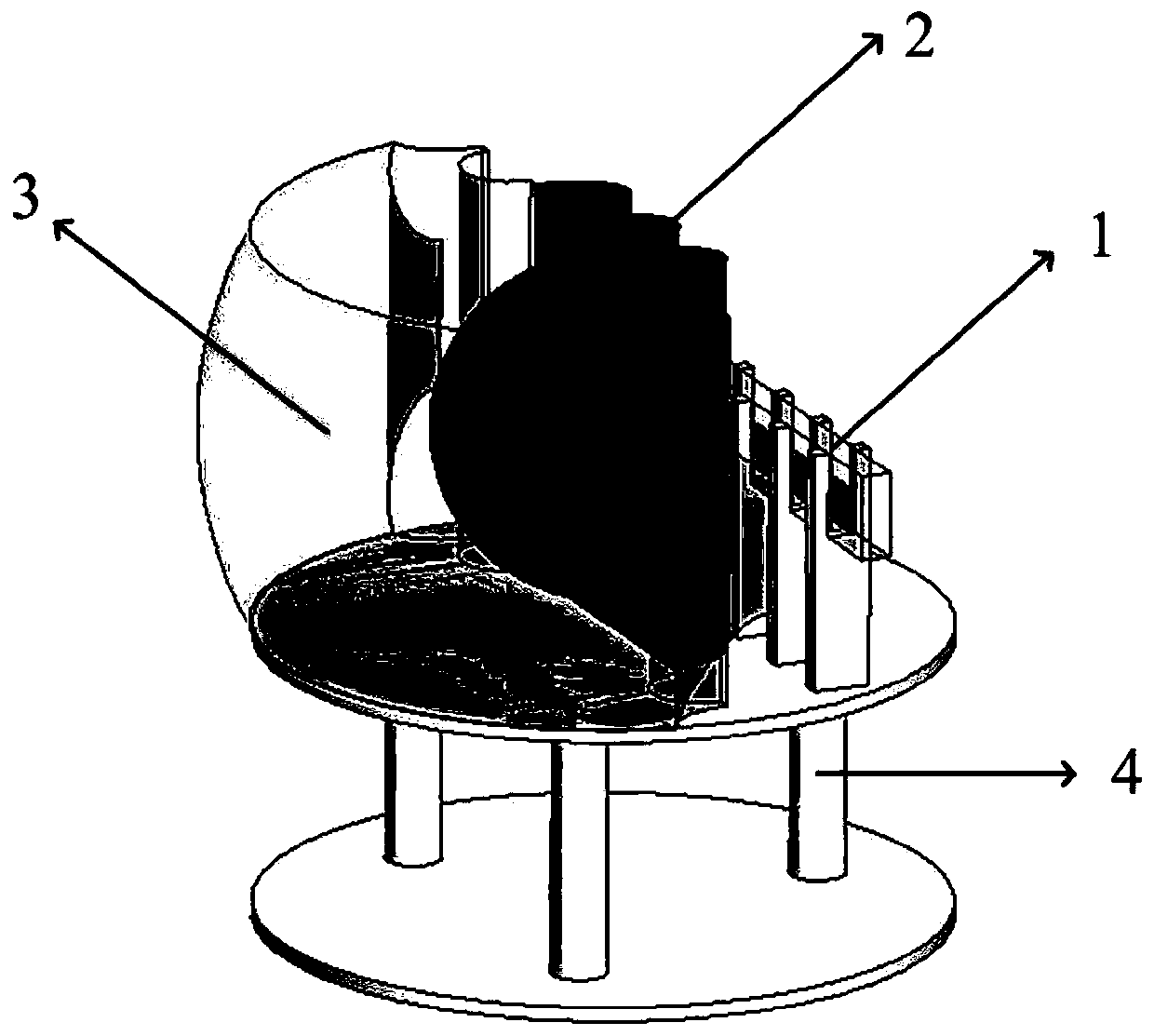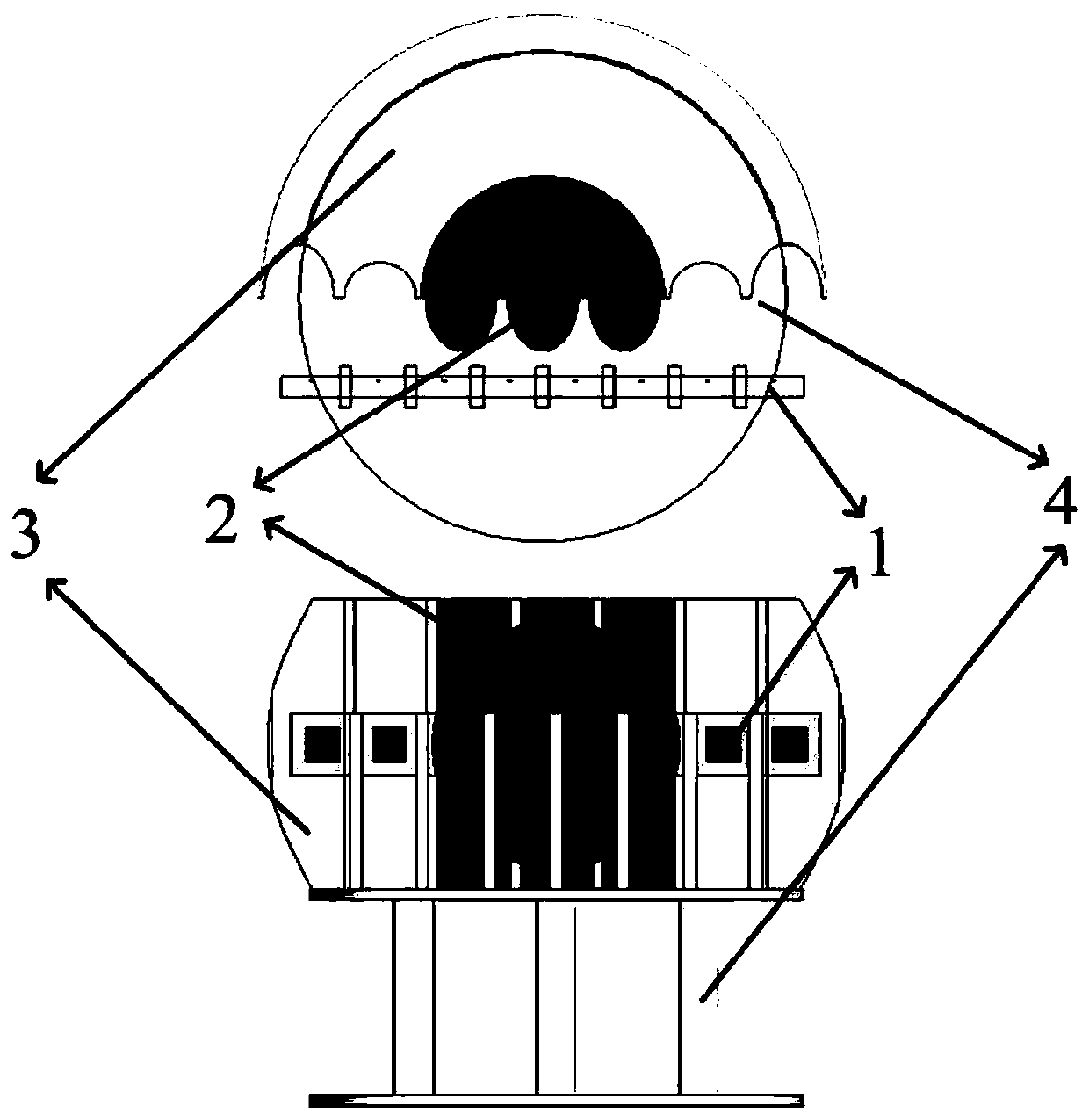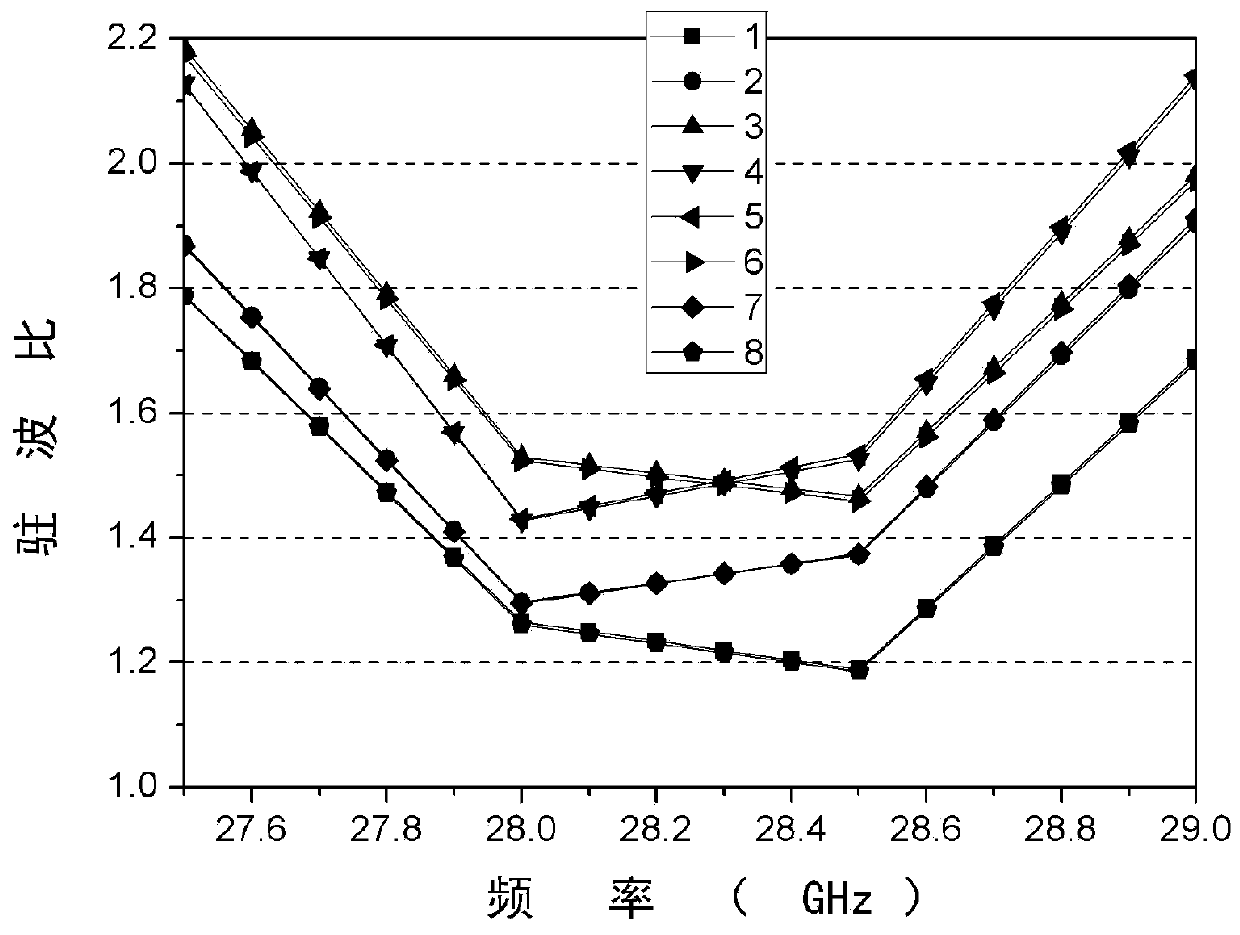Wide-Angle Scanning Anamorphic Hemispherical Dielectric Lens Antenna Based on Array Feed
A dielectric lens antenna and dielectric lens technology, which is applied to antennas, antenna arrays, specific array feeding systems, etc., can solve the problems of small scanning angle, reduced antenna profile, and high overall antenna profile, so as to improve scanning angle and aperture efficiency. The effect of low and high bore efficiency
- Summary
- Abstract
- Description
- Claims
- Application Information
AI Technical Summary
Problems solved by technology
Method used
Image
Examples
Embodiment Construction
[0023] specific implementation plan
[0024] figure 1 and figure 2 The three-dimensional design structure of the deformed hemispherical dielectric lens antenna based on array feeding is described exemplarily. As shown in the figure, this structure includes a 1×8 square microstrip patch feed source array 1 , an inner layer 2 of a deformed hemispherical dielectric lens, an outer layer 3 of a deformed hemispherical dielectric lens, and an antenna support firmware 4 . Among them, the 1×8 square microstrip patch feed source array 1, the inner layer 2 of the anamorphic hemispherical dielectric lens, the outer layer 3 of the anamorphic hemispherical dielectric lens, are in the same horizontal plane, the inner layer 2 of the anamorphic hemispherical dielectric lens and the outer layer 3 of the anamorphic hemispherical dielectric lens Connected together to form a complete deformed hemispherical dielectric lens, the antenna support firmware 4 supports and fixes the 1×8 square microst...
PUM
 Login to View More
Login to View More Abstract
Description
Claims
Application Information
 Login to View More
Login to View More - R&D
- Intellectual Property
- Life Sciences
- Materials
- Tech Scout
- Unparalleled Data Quality
- Higher Quality Content
- 60% Fewer Hallucinations
Browse by: Latest US Patents, China's latest patents, Technical Efficacy Thesaurus, Application Domain, Technology Topic, Popular Technical Reports.
© 2025 PatSnap. All rights reserved.Legal|Privacy policy|Modern Slavery Act Transparency Statement|Sitemap|About US| Contact US: help@patsnap.com



